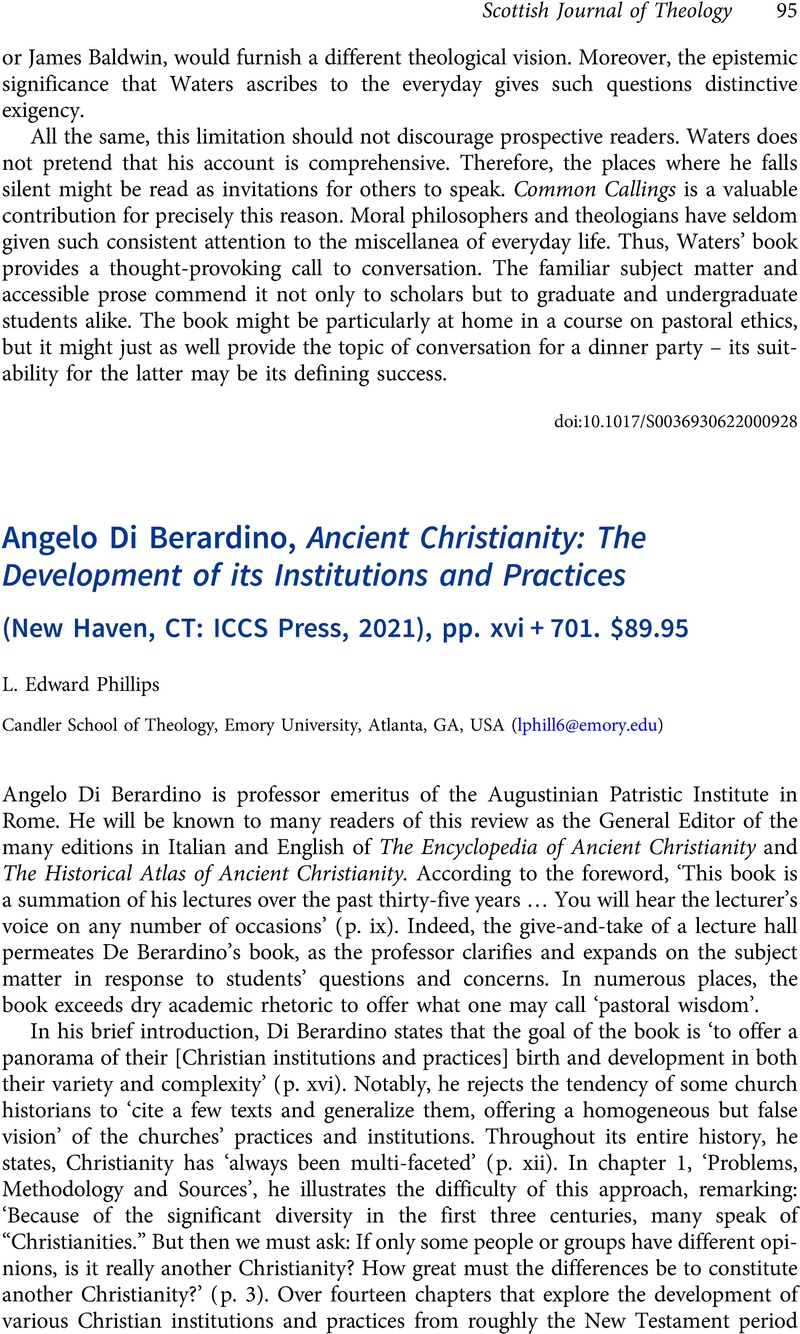No CrossRef data available.
Article contents
Angelo Di Berardino, Ancient Christianity: The Development of its Institutions and Practices (New Haven, CT: ICCS Press, 2021), pp. xvi + 701. $89.95
Review products
Angelo Di Berardino, Ancient Christianity: The Development of its Institutions and Practices (New Haven, CT: ICCS Press, 2021), pp. xvi + 701. $89.95
Published online by Cambridge University Press: 17 February 2023
Abstract
An abstract is not available for this content so a preview has been provided. Please use the Get access link above for information on how to access this content.

- Type
- Book Review
- Information
- Copyright
- Copyright © The Author(s), 2023. Published by Cambridge University Press



